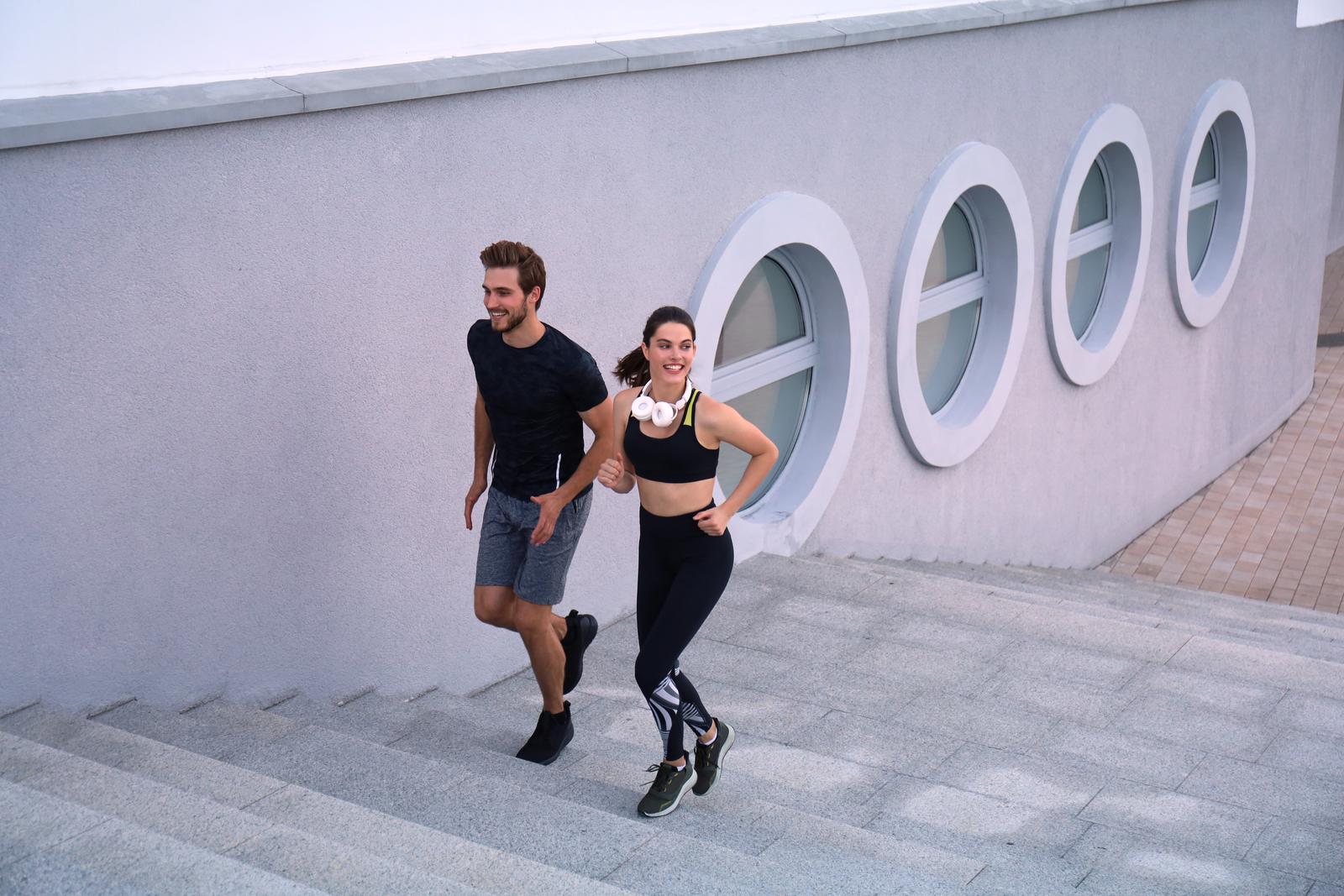
Learning the Running Technique to Run Faster
Running is a fundamental exercise that offers numerous health benefits. However, mastering the proper running form is crucial for maximizing performance and minimizing injuries.
Whether you’re a seasoned triathlete, a fitness enthusiast, or just starting your running journey, understanding and perfecting your technique can make all the difference. This guide will walk you through the key elements of good sprinting form, drills, and exercises to improve your technique, and additional tips to help you sprint faster and more efficiently.
Key Elements of a Good Running Form
Running is more than just putting one foot in front of the other. Proper sprinting form is essential for enhancing performance, preventing injuries, and making your runs more enjoyable. By focusing on the fundamentals of jogging technique to run faster, you can develop a style that helps you achieve greater speed and efficiency.
Feet Landing Underneath the Center of Mass
When focusing on the techniques to sprint faster, it’s crucial to ensure your feet land directly beneath your body’s center of mass. This alignment reduces the impact on your joints, which can help prevent injuries over time.
Additionally, it improves your balance and stability, enabling you to maintain a more efficient sprinting form. Proper foot placement is a foundational element that contributes significantly to overall speed and performance.
Quick, Snappy Cadence
To enhance your jogging technique to sprint faster, aim for a cadence of 170-185 steps per minute. A quicker cadence helps you avoid overstriding, which can lead to unnecessary strain and a higher risk of injury.
By taking shorter, faster steps, you maintain a more consistent pace and reduce the time your feet spend on the ground. This not only improves your speed but also enhances your endurance, allowing you to run longer distances more comfortably.
Upright Posture
Maintaining an upright posture is another key aspect of running techniques to run faster. Avoid leaning from the waist, which can cause imbalance and inefficient movement. Instead, keep your head up, your shoulders relaxed, and your eyes gazing forward. An upright posture promotes optimal breathing, as it allows your diaphragm to move more freely.
This improved oxygen flow can lead to better stamina and faster recovery. Additionally, good posture helps distribute the forces of sprinting more evenly across your body, reducing fatigue and the likelihood of injury.
Drills and Exercises
To perfect your jogging form, incorporate these drills and exercises into your training routine:
Balance Test
Stand on the balls of your feet and use your abdominal muscles to control your posture for 60 seconds. Focus on keeping your core engaged and your back straight, avoiding any swaying or wobbling. This exercise improves your balance and core strength, which are crucial components of the sprinting technique.
High Knees
Lift your right heel as if you’re toeing off, and then perform a high knee lift, bringing your knee up towards your chest. Alternate rapidly between legs while maintaining a brisk pace. This drill enhances your hip flexor strength and sprinting form, both key elements of the sprinting technique.
Tyre Sprints
Perform six 60m sprints, pushing off forcefully with each stride while pumping your arms vigorously. After each sprint, walk back to the starting point to recover before the next one. Tyre sprints boost your speed and cardiovascular fitness, integral parts of the running technique.
Create a Gap
While jogging, try to create a small gap between your knees by consciously focusing on your leg alignment. Ensure your knees track directly over your feet and avoid inward or outward rotation. This encourages proper leg alignment and reduces the risk of injury.
Run Tall
Maintain an upright posture by engaging your core and keeping your shoulders relaxed. Look straight ahead, not down at your feet, to maintain balance and forward momentum. This helps improve your overall efficiency.
Cadence
Increase your cadence by imagining you’re crushing grapes under your feet or using a metronome app set to 180 beats per minute. Aim for quick, short steps rather than long, bounding strides. A higher cadence can help prevent overstriding, enhancing the sprinting technique.
Arm Swing
Perform 50m warm-up sprints focusing on an equal arm swing, with your arms moving in a rhythmic motion from your hips to your shoulders. Proper arm movement helps maintain balance and rhythm, which are vital to the running technique to run faster.
High Hops
Perform six 50m reps of high-hopping on alternate legs, using your arms to help drive your body upwards. Focus on landing softly on the balls of your feet and maintaining a steady rhythm. This drill enhances your leg strength and coordination, which is important for the running technique to run faster.
The Midline
Run eight 100m reps, keeping your feet on either side of a line on the ground. Concentrate on your foot placement and ensure each step is aligned with the line. This exercise improves your jogging form and balance, both crucial for the running technique to run faster.
Squats
Perform three sets of 10 reps, lowering your body until your thighs are parallel to the ground and then pushing back up to the starting position. Keep your feet shoulder-width apart and your back straight. Strong quadriceps are very essential for powerful jogging.
Additional Tips
Here are some extra pointers to help you succeed:
Focus on Pushing Forward Through Your Hips with Each Step
By driving forward with your hips, you can maximize the efficiency of your stride. This technique helps propel your body forward, reducing energy wastage and enhancing overall speed.
Avoid Excessive Joint Flexion When Landing
Minimize the flexion in your joints upon landing to prevent undue stress and potential injuries. Maintaining a controlled landing can improve your form and contribute to long-term endurance.
Keep Your Arms Swinging Freely and Your Shoulders Relaxed
Allow your arms to swing naturally and keep your shoulders relaxed to avoid unnecessary tension. This promotes better balance and rhythm, creating a more fluid and comfortable experience.
Conclusion
Perfecting your running form is essential for enhancing performance and preventing injuries. You can develop a more efficient and effective running technique by incorporating these drills and exercises into your routine. Remember, consistency is key. Regular practice and attention to detail will help you achieve your running goals.
Stay Updated with Our Newsletter
Enhance your jogging journey even further by subscribing to our newsletter. Get the latest tips, drills, and expert advice delivered directly to your inbox. Whether you’re a beginner aiming to improve your form or a seasoned runner seeking advanced techniques, our newsletter has something for everyone. Sign Up Now and take the next step towards becoming a faster, more efficient runner!




